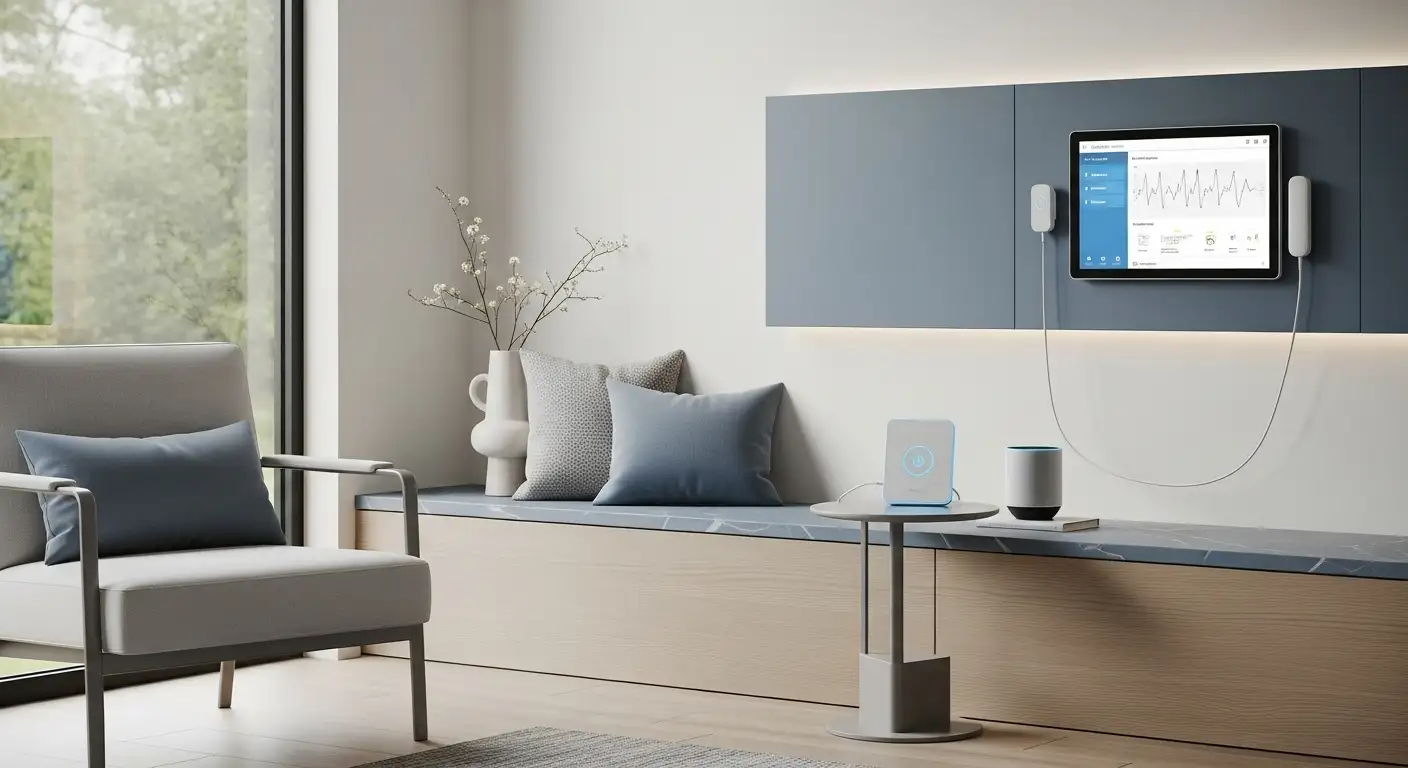Overview of Telehealth Services
Introduction to Telehealth
Telehealth services represent a modern approach to healthcare that leverages technology to facilitate medical consultations and health management. This innovative method allows patients to connect with healthcare providers without needing to visit a physical office. Telehealth has gained significant traction, especially following the COVID-19 pandemic, as more individuals recognize its convenience and efficiency. The rise of telehealth has provided a critical bridge for healthcare access, especially for elderly patients who may face mobility challenges. These services help meet the growing demand for accessible and timely medical care.

Advantages of Telehealth
There are numerous advantages associated with using telehealth services, making them an attractive option for elderly individuals and their caregivers. Below are some of the key benefits:
AdvantageDescriptionCost-EffectivenessTelehealth offers a more economical alternative to traditional doctor visits, yielding potential savings on travel and medical expenses [1].Improved Access to CareIt enhances access for patients living in rural areas or those with limited mobility, allowing healthcare professionals to reach a broader patient base.Enhanced Oral Health CareTelehealth can improve oral healthcare by enabling remote consultations and assessments, ensuring timely interventions [2].Reduction in Healthcare SpendingTelemedicine can help reduce overall healthcare costs by decreasing instances of medication misuse, unnecessary emergency room visits, and extended hospital stays [3].Increased Patient SatisfactionPatients often report higher satisfaction levels due to the convenience of receiving care from home, which enhances the overall healthcare experience [3].
Elderly individuals and their caregivers can greatly benefit from understanding these advantages when considering telehealth as a viable option for their healthcare needs. By embracing telehealth services, they can enhance their quality of life while ensuring that they receive the medical attention necessary for their well-being. Further exploration of how telehealth can cater to specific needs can be found in the upcoming sections.
Telehealth for Specific Conditions
Telehealth services provide valuable support for managing specific health conditions. This section focuses on how telehealth can be effectively utilized for diabetes management and for enhancing oral health care.
Diabetes Management
Diabetes is a prevalent condition affecting more than one in every ten people in America. An additional 96 million people are living with pre-diabetes, according to the Centers for Disease Control and Prevention. Telehealth can play a significant role in effectively managing diabetes by offering accessible consultations and monitoring tools.
Through telehealth services, elderly patients can:
The benefits of telehealth in diabetes management can be outlined as follows:
BenefitDescriptionAccessibilityEasier access to healthcare professionals without the need for travel.ConvenienceScheduling flexibility that accommodates busy lifestyles.Continuous MonitoringRegular monitoring of health metrics for better diabetes control.
Implementing telehealth services for diabetes management can lead to improved health outcomes and enhanced quality of life for elderly patients.
Oral Health Care Enhancement
Telehealth also offers significant improvements in oral health care by enabling remote consultations and assessments. Access to dental care can often pose challenges for elderly individuals due to mobility issues or the difficulty of traveling to appointments. Telehealth addresses these barriers effectively.
Elderly patients can benefit from telehealth in oral health care through:
The enhancement of oral health care through telehealth can be summarized as follows:
BenefitDescriptionAccessibilityReduces the need for in-person dental visits.TimelinessFacilitates quicker responses to dental concerns.EducationProvides ongoing dental health education for better self-care practices.
Utilizing telehealth for oral health care not only improves access but also fosters a proactive approach to maintaining good oral hygiene among elderly patients. For more information on community resources available for elderly care, consider exploring accessing community resources.
Telehealth in Healthcare Settings
Telehealth services have transformed the way healthcare is delivered, particularly in various healthcare settings. Two notable applications are the utilization of telehealth in emergency departments and the implementation of remote patient monitoring.
Emergency Department Utilization
Using telehealth technology in the emergency department can significantly enhance patient care. It increases access to medical specialists who may not be physically present in the hospital, which is particularly beneficial in critical situations. Additionally, utilizing telehealth can help protect providers and patients by reducing face-to-face interactions, especially in the context of infectious diseases.
One of the main advantages of telehealth in emergency settings is the potential for faster consultations. This can lead to quicker decision-making and treatment while maintaining high-quality care.
BenefitDescriptionIncreased AccessProvides patients with access to specialists remotely.Infection ControlReduces the need for in-person visits during outbreaks.Faster ConsultationsStreamlines communication between providers and patients.
Remote Patient Monitoring
Remote patient monitoring (RPM) leverages digital devices to continuously monitor a patient’s health from home. This approach is increasingly crucial for elderly individuals who may find it challenging to attend regular in-person appointments. RPM enables healthcare providers to track vital signs, symptoms, and other health metrics in real-time without requiring the patient to leave their home.
The effectiveness of remote patient monitoring is amplified when patients receive appropriate technological support. Each patient has different skills and comfort levels with technology. Ensuring they have the necessary support can lead to a successful experience during telehealth appointments. For example, providing written step-by-step instructions in various languages can facilitate understanding.
RPM ComponentImportanceDigital DevicesAllow for continuous monitoring of health conditions.Patient SupportEssential for ensuring comfort with the technology.InstructionsAids in the setup and use of monitoring devices.
Having a telehealth coordinator, nurse, or community health worker to assist patients can reduce troubleshooting time and alleviate frustrations associated with technology. This support enhances the overall experience, making it easier for elderly patients and their caregivers to manage health concerns effectively, allowing for improved access to health care services and more efficient management of chronic conditions. For more information on accessing community resources, refer to our article on accessing community resources.
Implementing Telehealth for Elderly Patients
As telehealth services become more prevalent, it is essential to ensure elderly patients and their caregivers can effectively utilize these resources. Implementing telehealth for this demographic involves several critical steps, including technology setup assistance, overcoming internet access challenges, and preparing patients for telehealth appointments.
Technology Setup Assistance
Every elderly patient has different skills and comfort levels with technology. Providing adequate support during the technology setup can lead to a successful telehealth appointment. Having a dedicated telehealth coordinator, nurse, or community health worker to guide patients through the setup process can significantly reduce troubleshooting time and alleviate patient frustration [4].
Written step-by-step instructions should be available, ideally in multiple languages, to accommodate the diverse needs of patients. These instructions can help them navigate the technology involved in telehealth services [4].
Overcoming Internet Access Challenges
Internet connectivity is a common barrier to accessing telehealth services, especially for elderly individuals. Many may face challenges with their home internet connections, which can hinder their ability to participate in virtual appointments. Identifying available community resources can assist in resolving these issues.
Community organizations may provide information regarding low-cost or free internet service options, devices, and additional technical support. For instance, local libraries often offer internet access and can assist elderly individuals in connecting to telehealth platforms. Consider creating a table with resources available in the area to assist elderly patients in accessing the internet:
Resource TypeDescriptionContact InformationLocal LibrariesProvide free internet access and assistance in navigating technologyVisit Accessing Community ResourcesNonprofitsOrganizations offering technology training and support[Contact Info]Community CentersFacilities that may host informational sessions[Contact Info]
Patient Preparation for Telehealth
Preparing for a telehealth appointment involves informing patients about the platform being used and any updates related to their health services. It is essential to notify existing patients of any changes to the telehealth platform and the actions they need to take to be ready for their appointments [4].
Moreover, caregivers can play a crucial role in preparing patients by ensuring they have all necessary materials, such as medications and health records, ready before their appointment. This preparation can enhance the effectiveness of the telehealth session, allowing healthcare providers to address the patient’s needs efficiently.
Providing resources related to regular reassessment importance and behavioral health issues can further empower patients and caregivers to make the most of telehealth services.
By focusing on technology setup, addressing internet access barriers, and adequately preparing patients for their appointments, healthcare systems can successfully implement telehealth services for elderly individuals, facilitating improved access to care.
Technical Considerations for Telehealth
Understanding the technical aspects of telehealth is essential for elderly patients and caregivers. This section highlights key considerations, including internet speed requirements, software selection, and hardware needs for effective telehealth delivery.
Internet Speed Requirements
Stable internet access is critical for telehealth services. A reliable and fast connection ensures smooth video and audio transmission during telehealth consultations. For a satisfactory video consultation experience without interruptions, it is advisable to aim for a minimum of 10 Mbps download speed and 5 Mbps upload speed [5]. Testing internet speed before a consultation can help avoid issues during the appointment.
Internet SpeedRecommended UseLess than 5 MbpsPoor video and audio quality5 - 10 MbpsAcceptable for basic consultations10 Mbps and aboveHigh-quality video consultations
HIPAA-Compliant Software Selection
Selecting the right telehealth software is essential for ensuring the security of patient information. The telehealth platform must comply with HIPAA regulations to protect sensitive health data during transmission. Not all video conferencing tools are HIPAA-compliant; popular platforms like FaceTime and Zoom do not inherently meet these requirements [5]. Healthcare providers should evaluate software options based on their compliance and effectiveness for telehealth services.
Hardware Selection for Effective Telehealth
Choosing the right hardware is crucial for effective telehealth appointments. Patients and providers need reliable equipment to facilitate clear communication and deliver healthcare services effectively. Essential hardware includes:
Selecting reliable hardware improves the telehealth experience, making it easier to engage with healthcare professionals. For more information on accessing community resources related to telehealth, visit our section on accessing community resources.
Barriers and Benefits of Telehealth
Telehealth offers many advantages, especially for the elderly population. However, there are obstacles to its implementation that need consideration. This section will explore the challenges in telehealth adoption, the potential for cost savings, and the productivity gains associated with using telehealth services.
Challenges in Telehealth Adoption
While the growing availability of telehealth services presents many benefits, there are several barriers to widespread adoption, particularly among elderly patients. Key challenges include:
ChallengeDescriptionTechnology FamiliarityLack of comfort with digital devices among elderly individuals.Internet AccessLimited connectivity especially in rural regions.Reimbursement IssuesInconsistent Medicare and Medicaid coverage for telehealth services.
Cost Savings Potential
Telehealth has the potential to significantly reduce healthcare costs for patients and providers. Various scenarios illustrate how utilizing telehealth can lead to financial benefits:
Cost Savings AreaDescriptionReduced Travel CostsLess time and money spent on transportation.Decreased ER VisitsFewer unnecessary visits lead to lower healthcare costs.Preventing HospitalizationEarly intervention possible through telehealth reduces the likelihood of hospital stays.
Productivity Gains and Cost Reduction
Implementing telehealth services can enhance productivity for healthcare providers, translating into a more efficient use of resources and improved patient care. The benefits include:
In conclusion, while there are challenges to successful telehealth adoption, the potential for cost savings and productivity improvements presents a favorable case for its implementation, especially for elderly patients and their caregivers. For more information on accessing community resources and additional support systems, refer to our article on accessing community resources.
References
[2]:
[3]:
[4]:
[5]:
[6]:



